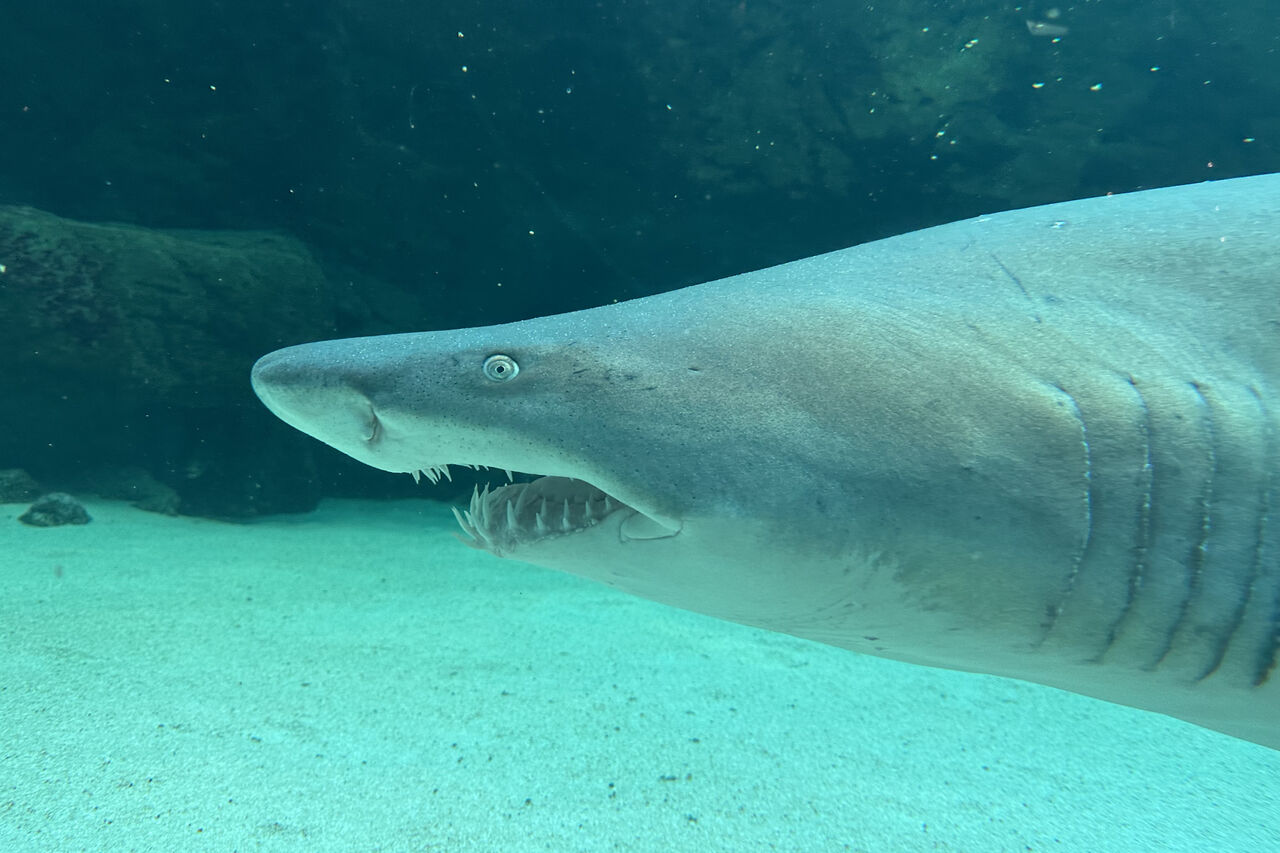Appearance and lifestyle:
Like all sharks, ragged-tooth sharks (Carcharias taurus) have a cartilaginous skeleton. They grow to about 3,2m in length and live for about 40 years. They reach sexual maturity after 5 years, and at approximately 2.2m in length. Their bodies are big, light brownish grey in colour, with darker spots. Sharks’ teeth are arranged in rows which continually move slowly forward, like conveyor belts. This ensures a constant supply of sharp, new teeth and results in sharks losing and replacing thousands of teeth in a lifetime.
Mating in ragged-tooth sharks appears to be a violent affair, as the females are often badly bitten. The reason for this is that the males have to latch onto the females during copulation, and they have only their mouths to do so! The eggs are fertilised internally and are enclosed in egg cases in groups of 16 to 23. The embryos initially feed on internal supplies of yolk. Later, they feed on fertilised eggs and other developing embryos (known as intrauterine cannibalism). As a result, only two pups are born per litter, i.e. one per oviduct. The gestation period is 9 to 12 months, depending on the water temperature.

Habitat:
Ragged-tooth sharks, also known as grey nurse sharks in Australia and as sand tiger sharks in the USA, occur in temperate to tropical coastal waters of the Atlantic, Indian and western Pacific oceans. In South Africa they are common along the eastern and southern coasts, occurring as far west as False Bay.
In November/December they congregate to mate on reefs in northern Eastern Cape and southern KwaZulu-Natal waters. The pregnant females then travel north as far as southern Mozambique to gestate in warmer waters. After a gestation period of 9 to 12 months, they return to the Eastern Cape (south of the Kei River) to give birth.
Shark ambassadors
These juvenile ragged-tooth sharks act as ambassadors for their species, as we only display them for a short period of time before returning them to the wild. Once they reach a certain size, we will release them at Buffel’s Bay (close to the Knysna/Plettenberg Bay area), where other ragged-tooth sharks of a similar age are found. All our sharks are tagged prior to their release.
Diet:
They eat fish, crustaceans, and small sharks.
Threats:
Ragged-tooth sharks are listed on the IUCN Red List as critically endangered. They are threatened around the world because they are slow to reach sexual maturity, they give birth to few young and, because of their inshore habits, they are highly vulnerable to over-fishing. Ragged-tooth shark populations have been seriously depleted in Australia and the USA due to over-fishing. In 1984, Australian ragged-tooth sharks became the world’s first protected shark species. Today, they are also protected in the USA, while in South Africa, they may not be sold commercially without a permit.
The status of the South African ragged-tooth shark population was considered to be “near threatened” by an International Union for Conservation of Nature working group in 2003. However, the actual size of the population is unknown and is currently under investigation.
